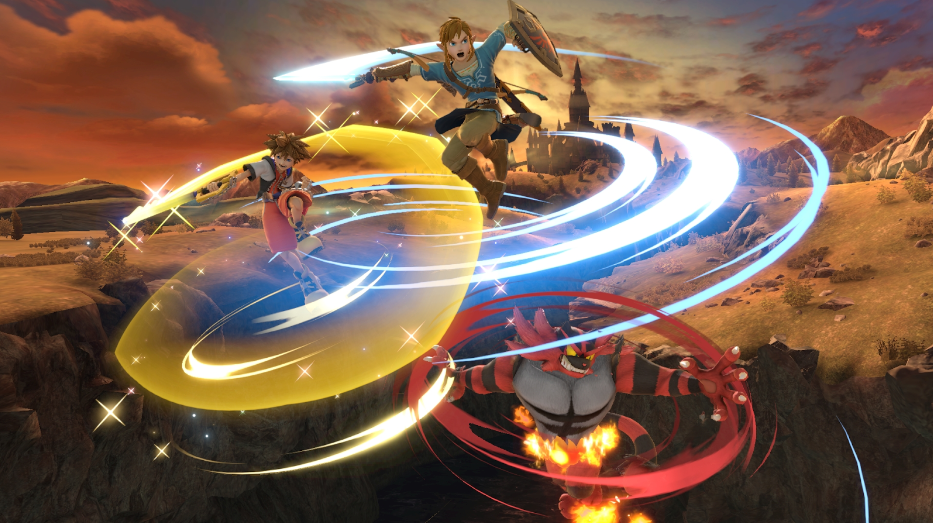The Squad Strike format has grown popular among Super Smash Bros Ultimate players for the past few years. For those unfamiliar, Squad Strike means building up a team of 5, or more commonly 3, fighters. Instead of the standard stocks you would expect to see in a 1v1 bracket when you are Knocked out with a character, that character is gone, and you will now play your next character for the following stock.
One of the primary reasons for its rising popularity has been the increased parity among various SSBU characters, as seen in multiple Smash tier lists of the roster. Another element aiding in Squad Strike matches is the overlap in gameplay among the many characters, allowing players to play similar characters across their squad. For example, Ken, Kazuya, and Ryu, or widely different characters, force a tempo change from their opponents.
If you hop into your local gathering of fighting games and be honest, if there aren’t any, you should set one up! Then you might have seen a bracket for Squad Strike battles. It is a legitimately fun game mode and proposes interesting strategic challenges for players who like to use multiple characters almost equally.
Generally speaking, Squad Strike teams are made up of three characters. The Point, the Center/Middle, and the Anchor; If you have played any team-based fighter game, like most anime fighters, this setup should be familiar.
Here is a quick rundown of what each is for those who haven’t.
The Point
This is the fighter with which you will start the match. Ideally, you want this to be a fighter that can deal a lot of early damage but not your best character. The reasoning is that you are very likely to lose them early so they should be somewhat disposable.
The Center/Middle
This role can vary a lot by player. These fall into one of two camps most commonly:
Some will favor a strong KO character, since your point will have dealt a good amount of damage, potentially getting the opponent Point KO’d and gotten the Center into the mid-high percentages for the Center to sweep the fight and go on to fight the Anchor.
Others will seek a fighter with a different gameplay style than their Point. Again, ideally, after fighting the Point your opponent should be unto their center against your point, and now you will be using a completely different center to change the tempo and throw them off balance for the Anchor fight.
The Anchor
Often the main character of a player. You should be able to use your anchor even on the stock down, having to challenge the Center and Anchor in the same stock.
Best case: You are coming in fresh against a worn-down Anchor, so character with good KO capabilities will be favored.
Common case: You and your opponent are more or less fresh (below 10%) when the two have to use their Anchors. In this case, having a lot of experience and being calm will win the battle.
Worst case: You have to get rid of the Center and then fight off the Anchor. Here, a character with lots of KO options and the ability to not take damage will be handy, since you first need to escape the deficit by taking as little damage as possible.

So then, how can you go about building a well-rounded team or a Squad Strike bracket?
The first instinct is to go with what you know, which is a solid philosophy, and it means you are playing the character you already know by heart. But it might not be the most effective strategy for Squad Strike.
A better perspective is to follow the point, center, and anchor method explained above. To add to it, there are various mentalities on how each of those positions should be filled. You can, for example, choose fighters that not only fill the roles but also cover for each other’s bad match-ups, making it easier to rebound after a loss. Another is to use similarly styled fighters, like the aforementioned “shotos” lineup of Ken, Ryu, and Kazuya in various orders.
Since we’ve mentioned them twice, Echo fighters, like Ken and Ryu, can be a contentious topic for Squad Strike and one you should peak with your local TO about if you want to participate. For some, Echo fighters are totally fine to be part of the team. Sometimes some echo fighters are given exceptions like Chrom.
With all set and done, practice and refine your team. Get together with friends and play out a few rounds of Super Smash Bros. Ultimate Squad Strike with your selected roster to see if any major trends pop up. Is your point getting battered every single time, leaving you overreliant on your Center? Do you feel you pop off better with your Center than your Anchor? Are you struggling to secure KOs with Point and Center? These are the sort of questions you will want to be answered before heading out to your local.
For even more handy guides like this, click right HERE.